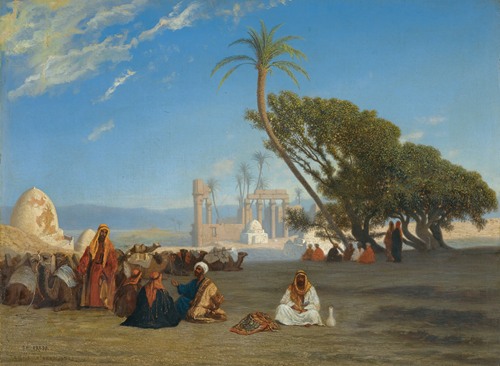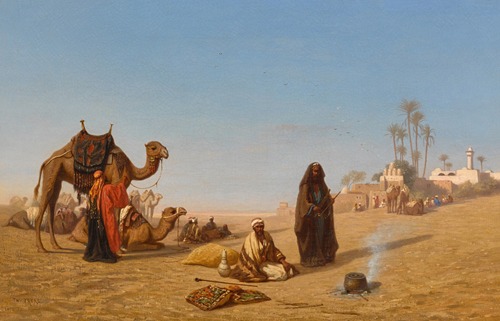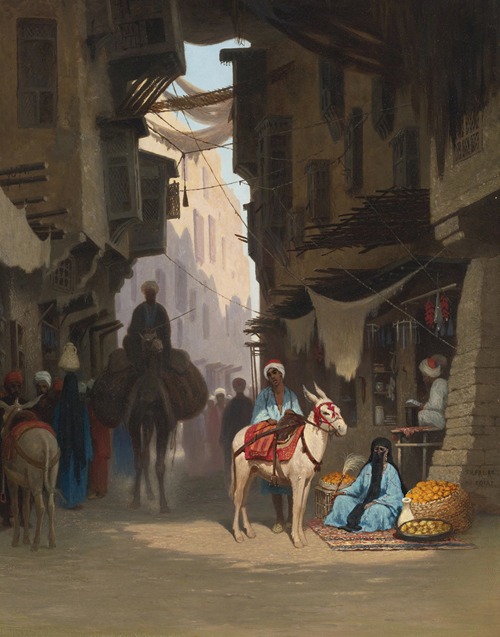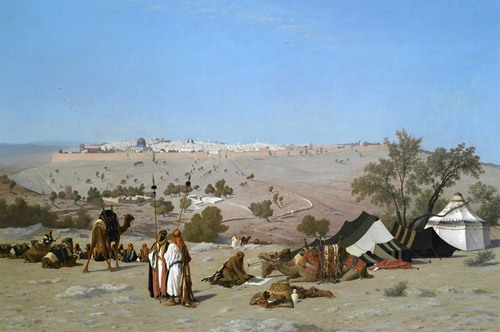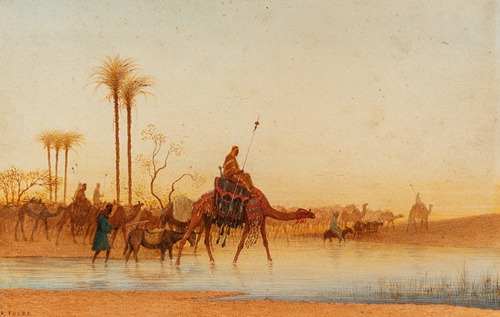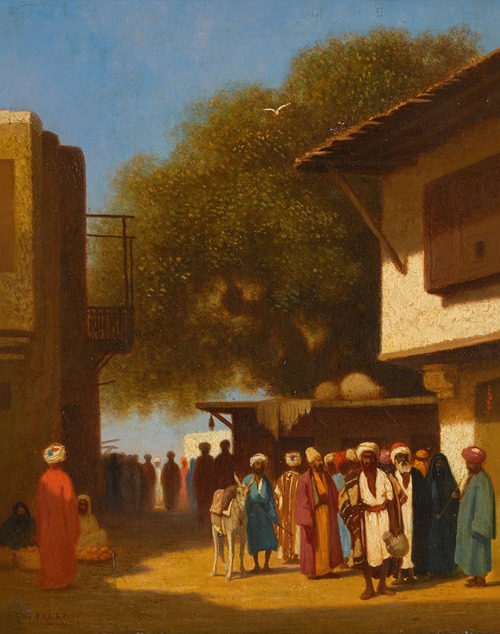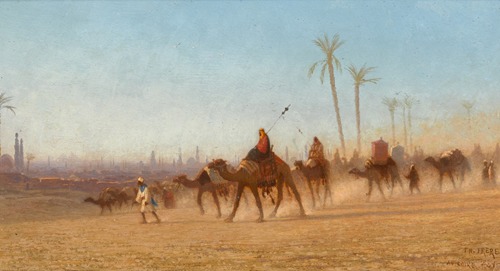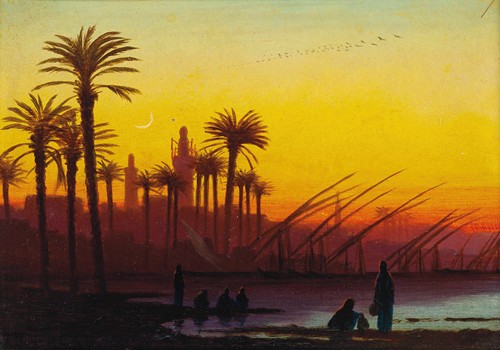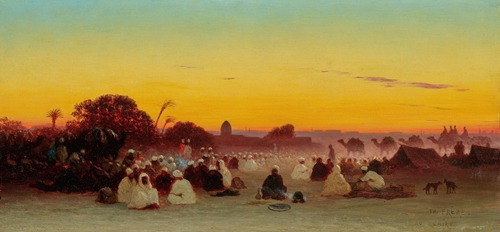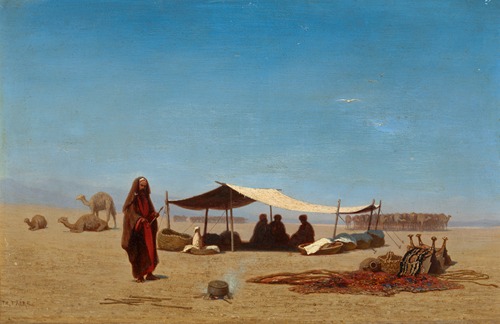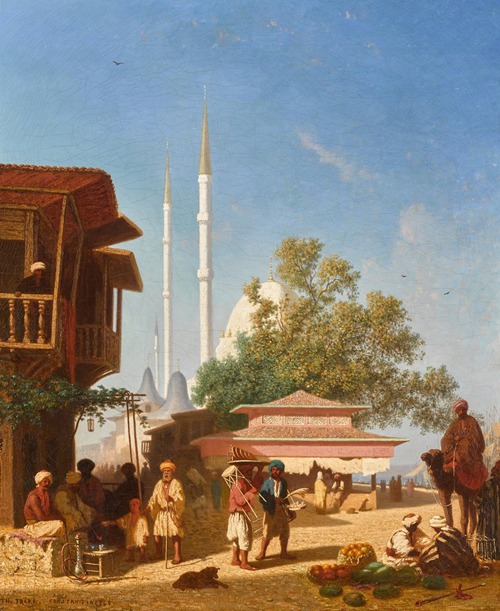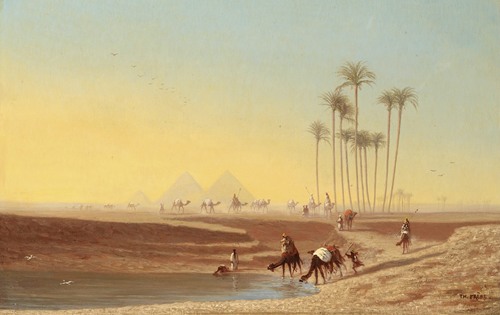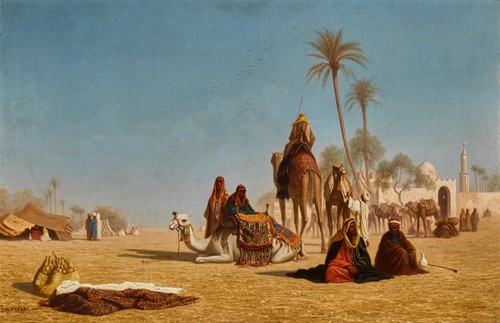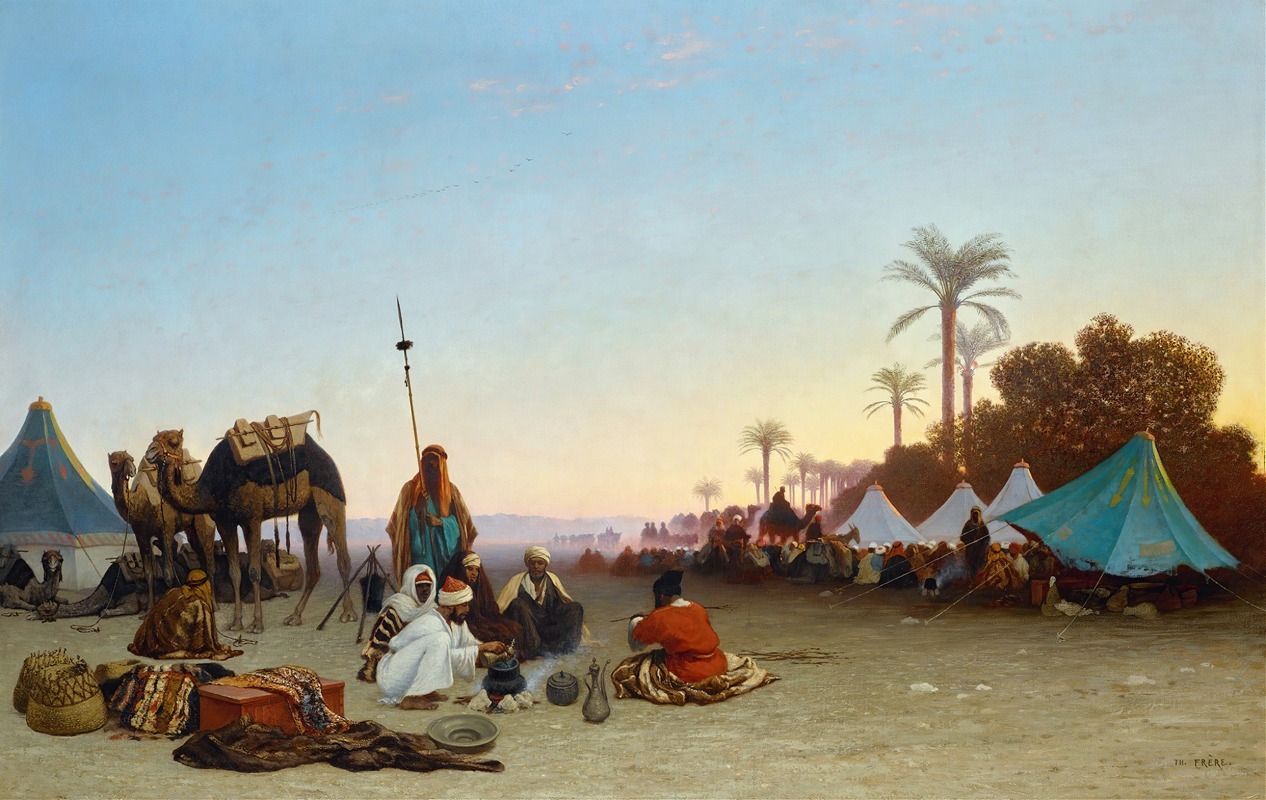
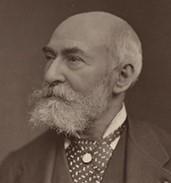
Charles-Théodore Frère was a French Orientalist painter.
The son of a Paris music publisher, Frère studied at the École des Beaux-Arts under Jules Coignet and Camille Roqueplan. On completing his studies, he travelled throughout France visiting Alsace, Auvergne and Normandy.
On returning to Paris, he exhibited Vue des Environs de Strasbourg at the 1834 Paris Salon. His exhibits at the Salon in subsequent years were nearly all Orientalist paintings as a result of several journeys to Africa and the Near East. . Charles Théodore Frère exhibited at the Paris Salon from 1834 to 1881, participated in the Expositions Universelles of 1855, 1867 and 1878 in Paris and, up to and including 1887, in the Salon des Artistes Français. He was awarded medals in 1848 and in 1865.
After a stay in Algiers in 1836, he left with the army for Constantine which was taken on 13 October 1837, returning to Paris in 1839. Like his younger brother Pierre-Édouard, he was a prolific painter. During his first trip to Algeria, he completed works for the King of Württemberg. Around 1851, he undertook a further journey to the Near East, visiting Malta, Greece, Egypt and Turkey becoming one of the few artists to paint Beirut, Damascus and Palmyra. In 1853, he established a studio in Cairo, becoming the court painter there. The viceroy of Egypt elevated him to the rank of bey.
In 1869, he once again travelled to the Egypt, now as a member of Empress Eugénie's party, for the opening of the Suez Canal. She commissioned a series of watercolours which could not be delivered to her owing to the 1870 Franco-Prussian War. Instead they were given to her friend and pupil, the Marquis of Puisaye.
